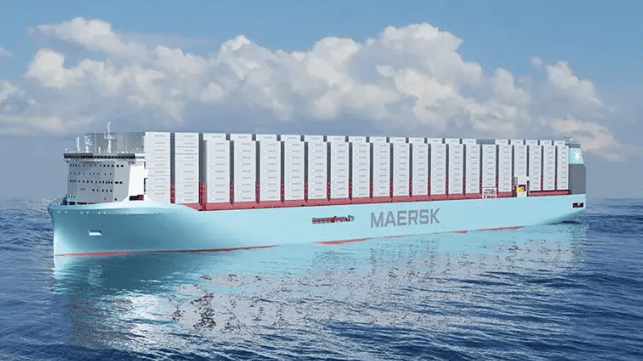Container shipping major Maersk has launched the construction of its 16,200 TEU dual-fuel containerships that can run on green methanol.
South Korean shipbuilder Hyundai Heavy Industries hosted a steel-cutting ceremony for what is believed to be the first vessel from the series on November 28, 2022, based on a social media update from Maersk.
The steel-cutting ceremony was attended by the representatives from HHI, Maersk and ABS, which will be in charge of classing the vessel.
“This marks the turning point where the project moves from design into reality and we look forward to continuing the good cooperation with Hyundai Heavy Industries Co., Ltd. Production will progress fast from this point and the next key stage, factory approval test of the main engine, is expected in Spring 2023,” Kristian Agdrup, Lead Naval Architect A.P- Moller – Maersk, said during the steel cut ceremony at HHI yard.
Maersk has a total of 19 methanol-powered container carriers on order at Hyundai Heavy Industries and Hyundai Mipo Dockyard. These include six vessels with a nominal capacity of 17,000 TEU ordered last October, twelve 16,000 TEU boxships and one feeder ordered in 2021. The dual-fuel vessels will be capable of burning methanol as well as conventional low sulphur fuel.
The feeder is expected to join Maersk’s fleet in 2023 while the first newbuild from the 16,000 TEU batch is slated for delivery in 2024. The six 17,000 TEU vessels are all to be delivered in 2025 and will sail under the flag of Denmark.
Maersk said that when all 19 vessels on order are deployed and have replaced older vessels, they will generate annual CO2 emissions savings of around 2.3 million tonnes.
The Danish container shipping major has set ambitious 2030 targets as part of its 2040 decarbonization strategy that includes having at least a quarter of its ocean cargo transported with green fuels.
The company aims to cut its emission intensity in the ocean space by 50% when compared to the 2020 baseline. This includes having at least 25 percent of ocean cargo transported with green fuels.
Copyright Ships & Ports Ltd. Permission to use quotations from this article is granted subject to appropriate credit given to www.shipsandports.com.ng as the source.

